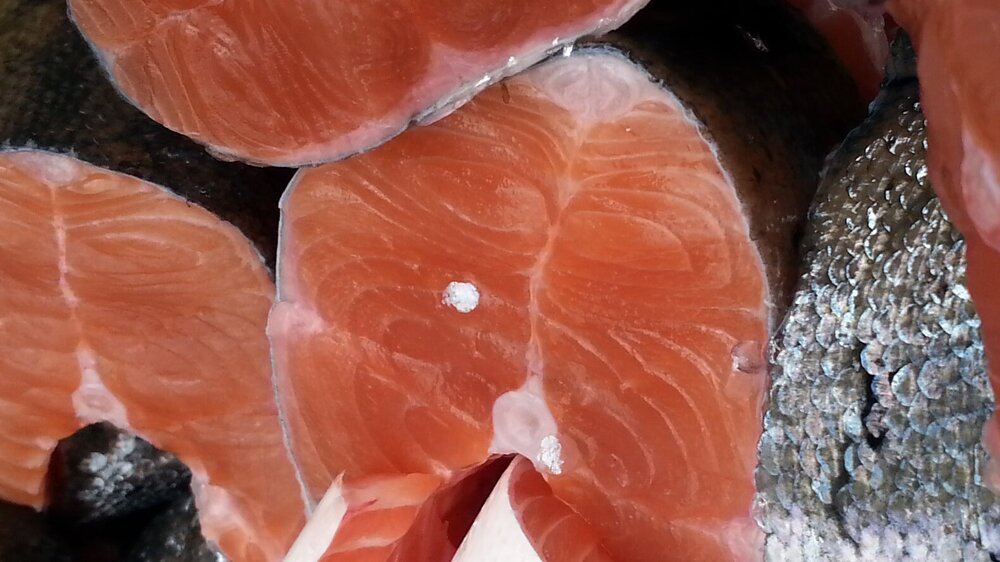Are you as fit as a wild salmon?
The wild salmon is really fit and has good speed and resilience. In this task, you can check if you are as fit as a salmon!
Competency goals for grade 7, Science
- ask questions and make hypotheses about scientific phenomena, identify variables and collect data to find answers.
- distinguish between observations and inferences, organize data, use cause-and-effect arguments, draw conclusions, assess sources of error and present findings.
- explain how organisms can be divided into main groups and give examples of the characteristics of different organisms.
You can run, but wild salmon can't.
The prolific wild salmon
The wild salmon is really agile. It is torpedo-shaped and therefore glides easily through the water. It has strong muscles and long, strong pectoral fins. The wild salmon can be both a fast sprinter and incredibly enduring over long distances.
How fast a wild salmon can swim and how high into the air it can jump depends on several things.
Large wild salmon can both swim faster and jump higher than smaller wild salmon.
Wild salmon are alternately warm. This means that wild salmon maintain roughly the same temperature as the water in which they live. If the water is too cold, wild salmon become slower. They swim fastest and jump highest when the water temperature is 13-18 degrees.
The rule of thumb is that wild salmon can swim up to ten body lengths per second.
To be able to jump really high, wild salmon must have the opportunity to gain good speed. The speed of the water is also important. A large wild salmon at full speed can jump about four meters into the air.
Task:
Using the information in the text, calculate how far a wild salmon with a body length of 70 centimeters can swim in 10 seconds.
We humans run faster than we swim. The world record for 100 meter running is 9.58 seconds, while the world record for 100 meter swimming is 46.91 seconds. Why is that, do you think? Test yourself. How far can you run in 10 seconds? Make a table with the results for everyone in the group.
Measure your height and calculate how many body lengths you run per second. Make a table with the results for everyone in the group.
No one can jump 4 meters straight up in the air. The world record for high jump with a run-up is 2.45 meters. Find out how high you can jump with a good run-up. Make a table with the results for everyone in the group.
The wild salmon has a torpedo-shaped body that glides easily through the water. Illustration: Robin Ade
Wild salmon are both fast and persistent
The large muscle (the pink meat that makes up most of a salmon chop) is the "sprinting and jumping muscle". The brown meat closest to the skin along the lateral line organ is the enduring "walking muscle". It is used by the wild salmon when it goes on its long migration in the sea.
For the teacher
This task requires that you have some space. The activities can be carried out in the schoolyard. There should be four or five students in each group. The only equipment required is a tape measure and a clock with a second hand.
Encourage students to present their results to the others.
The task can be extended with questions related to speed measured in meters per second.
Answer to question 1: Salmon swim 10 body lengths per second. A 70 cm salmon has then swum 70 × 10 = 700 cm (7 meters) in 10 seconds.
Student booklet
The Nasjonalt villakssenter works for a stronger wild salmon and wants to promote the stream as an educational resource. Bring experiences from the classroom and put them in context with experiences outside. Many schools in Norway have a local stream. Even in our largest cities, there are streams that can be visited. Contact us for assistance, tips and professional support.
The student booklet "Who lives in your river?" can help with both preparation and follow-up work.




